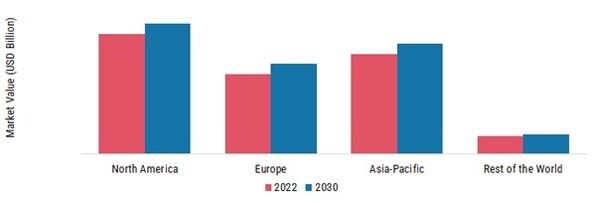Major market players are spending a lot of money on R&D to increase their product lines, which will help the Ultrasonic Sensor market grow even more. Market participants are also taking a range of strategic initiatives to grow their worldwide footprint, with key market developments such as new product launches, contractual agreements, mergers and acquisitions, increased investments, and collaboration with other organizations. Competitors in the Ultrasonic Sensor industry must offer cost-effective items to expand and survive in an increasingly competitive and rising market environment.
The major market players are investing a lot of money in R&D to expand their product lines, which will spur further market growth for Ultrasonic Sensor. With significant market development like new product releases, contractual agreements, mergers and acquisitions, increased investments, and collaboration with other organizations, market participants are also undertaking various strategic activities to expand their global presence. To grow and thrive in a market climate that is becoming more competitive and growing, competitors in the Ultrasonic Sensor industry must offer affordable products.
Manufacturing locally to cut operating costs is one of the main business tactics manufacturers use in the global Ultrasonic Sensor industry to benefit customers and expand the market sector. Major Ultrasonic Sensor market players, including Siemens AG, Pepperl+Fuchs GmbH, Honeywell International, Inc., Murata Manufacturing Co. Ltd, Rockwell Automation, Inc, Megatron Corp., Synaptics Inc., Robert Bosch GmbH, Baumer Ltd, Schneider Electric SE, MaxBotix Inc, and Omron Corporation, and others, are attempting to increase market demand by funding R&D initiatives.
Siemens AG is a German multinational conglomerate company headquartered in Munich, Germany. It is one of the largest producers of electrical and electronic products in the world. Siemens AG operates in four main business segments: Digital Industries, Smart Infrastructure, Siemens Energy, and Siemens Mobility. The Digital Industries segment offers products and solutions for digitalization in the fields of industry, energy, and healthcare. The Smart Infrastructure segment provides products and solutions for building technology, low- and medium-voltage, and fire safety and security.
The Siemens Energy segment offers products and solutions for the generation, transmission, and distribution of electricity, as well as the production and transportation of oil and gas. The Siemens Mobility segment provides products and solutions for rail and road transportation.
Pepperl+Fuchs GmbH is a German-based company that specializes in the design and manufacture of industrial sensors and automation solutions. The company is a leading provider of industrial sensors, intrinsic safety products, and automation solutions for various industries, including automotive, packaging, food and beverage, and oil and gas. Pepperl+Fuchs GmbH operates in three main business segments: Sensors, Automation, and Intrinsic Safety. The Sensors segment provides a wide range of industrial sensors, including proximity sensors, photoelectric sensors, and ultrasonic sensors. The Automation segment provides products and solutions for industrial automation, including control systems, Fieldbus components, and industrial PCs.

















Leave a Comment